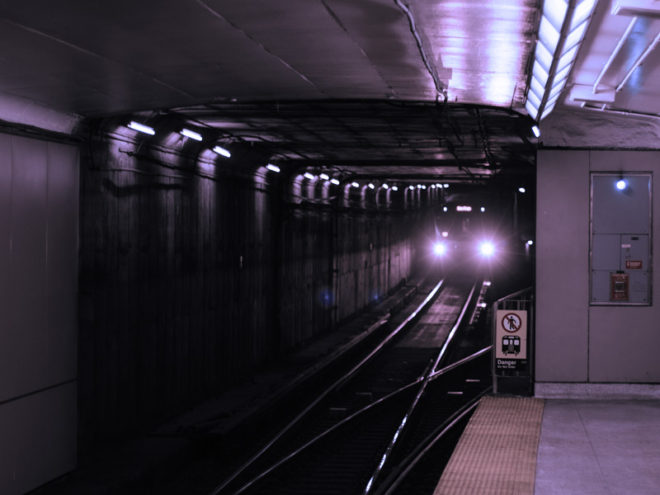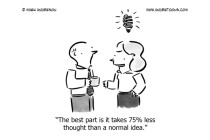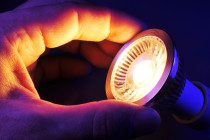![]()
Working in confined spaces or areas exposed to explosive and flammable gasses, such as hydrogen, methane, propane, and other hydrocarbons, can be very dangerous. In Canada many workers are injured or killed in confined spaces, with 60% of the fatalities being among the rescuers, according to the Canadian Centre for Occupational Health and Safety. This is why hazardous area lighting, like Explosion Proof LEDs, is necessary and required by law to ensure people’s safety.
Standard lighting poses a threat to workers in confined spaces like tanks, vents, pipes, sewers, tank cars and manholes, because some luminaires can cause explosions by igniting combustible gas, vapor, particles or fiber that start an explosive chain reaction or a fire. Similarly, the oil and gas, petrochemical, textile and even grain processing industries may be subject to accidents while using regular duty lighting, given that electrical equipment such as switches and relays can easily spark during standard operation.
Explosion Proof LED Lights contain and isolate potential spark triggers in safe housing material, such as aluminum, preventing explosions.
If you’re looking to upgrade your hazardous area lighting equipment, you should consider LED lights not only because they’re more environmentally friendly, but because they are cost-efficient and the safest lighting source in the market today.
When you’re looking for Explosion Proof LED Lighting, there are seven things you should know:
- Explosion Proof does not mean that the lighting source -whether it’s an LED or not- doesn’t spark; it just means that the items susceptible to spark are isolated in explosion-proof boxes that contain ignition repeatedly, avoiding propagation outside the box. In the same vein, “explosion proof” does not mean your LEDs will survive an explosion, just that they won’t be the cause for an external explosion.
- Explosion Proof LEDs are bump and break resistant. Traditional hazardous area lighting used fluorescent or incandescent bulbs that had to be treated delicately, because they break easily. While they do not pose a fire hazard, they can be dangerous in confined spaces where workers may cut themselves or broken pieces or inhale the toxic fumes from the fluorescent bulbs. LEDs are stronger in general; they use heat-resistant materials and tempered glass, which is stronger and long-lasting, in addition to being free of mercury and toxic substances.
- Explosion Proof LEDs are very energy efficient, they use up to 90% of the energy to provide light and have no heat or conversion loss to account for, this means that they use a lot less power to function and have low wattage consumption. Organizations save on-site energy from portable generators and other in-situ sources, providing more sustainable and profitable operations. In other words, you’ll save money running explosion proof LEDs for the same or better light output your current explosion proof lamps give you.
- Flexible Options: LEDs come in modular designs that can be combined to allow light outputs to be easily increased or lowered to match required light levels, this allows a multitude of options to be used. From dish umbrella, to column and polygon shapes you can set them up to meet your needs, easily adapted to existing access points all while saving energy and money.
- Explosion Proof Lighting is classified by ratings and zones. Ratings are used by professionals, like engineers, architects and electricians, to find the ideal place for the light source to be used in, as well as under what conditions they will perform best. When you’re shopping around for options look at the Certifications: Class I, Division 1, Class I Division 2 and Zones 0, 1 and 2. Class I, Division 1, encompasses Zone 0 and Zone 1 areas, while Class I, Division 2 only qualifies for Zone 2 areas.
- Zone 0 is a hazardous location where an explosive gas, vapor or liquid atmosphere is present continuously or for long periods of time.
- Zone 1 is a location with frequent presence of ignitable gas, vapor or liquid exist under normal operating conditions, between 10 to 1,000 hrs/year
- Zone 2 is a location where flammable gas, vapor or liquid is not present or unlikely to be present during normal operating conditions, and unwanted or hazardous substances will only be present for 10 hrs/year or 0 to 0.1% of the time.
- Explosion Proof LEDs Save Your Operation Money: LED explosion proof lights and fixtures are very affordable compared with their incandescent or fluorescent counterparts, they can be fitted to just about any corporate or individual budget, with an easy offset over time, where they essentially pay themselves back, considering that they last longer, won’t require replacement bulbs and consume very little power to provide clear, crisp and cool lighting.
- Long Lasting Investment: most LED lights have a 50,000 hours estimated life span, making them the safest and most effective investment in hazardous area lighting equipment for your company or team. With low wattage options and high lumen output, these are bright, efficient and cost-effective luminaires for dangerous work, regardless of the space or industry.
Do you have any questions regarding hazardous area lighting, explosion proof LED lighting or LEDs? Drop them below or contact us and we will get back to you asap.
About The Author

-
Serial Entrepreneur, Technologist and Inventor.
My objective is to develop useful products that have a net positive effect in the lives of those that use them and the environment that we live in.
CEO of Mission LED Lighting Company Ltd.
- 2017.05.24LED factsWhy Are Cars Switching to LEDs if They’re Too Bright?
- 2017.05.09Be green & saveHow to Easily Replace T8 Fluorescent Tubes With LED
- 2017.03.07Build a better future7 Things About Explosion Proof LED Lighting You Should Know
- 2017.02.28Be green & saveWhy We Love LED Grow Lights (And You Should, Too!)





Pat Keane
Can you use regular LED lights for Class 1 Division 2 locations?
Reply@Bill Matthews
No, not unless they have been certified for such use by an NRTL, Nationally Recognized Testing Lab.
ReplyLED fixtures manufactured for Class 1 Division 2 require differences in design than standard LEDs for general lighting.